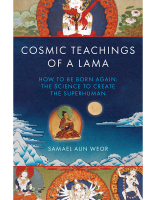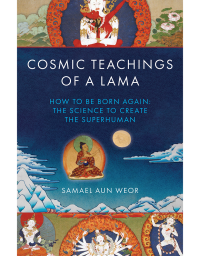Ancient wisdom emphasizes the idea of seven “pathways” towards the ineffable joy of non-existence, which is absolute Being and real existence. In its depth, such a luminous idea is unitary, since there is only one pathway with seven journeys.Let us think of the astrological formula of the Moon, Mercury, Venus, Sun, Mars, Jupiter, and Saturn. It is unquestionable that each of the seven worlds is intimately related with one of the seven journeys…
Did you ever hear about the twelve nidanas1 or causes of being? What do you know about the Four Noble Truths?2 It is obvious that the Twelve Nidanas and the Four Truths are...
“...especially characteristic of the Hinayana System.3 They belong to the wise theory of the stream of catenated law which produces merit and demerit, and finally brings Karma into full sway (the whole plenitude of its power).
“It is a system based upon the great truth that reincarnation (transmigration, return, and recurrence) is to be dreaded…. The Hinayana System, or School of the “Little Vehicle,” is (obviously) of very ancient growth; while the Mahayana (or Greater Vehicle School) is of a later period, having originated after the death of Buddha.
“Yet the tenets of the latter are as old as the hills that have contained such schools from time immemorial, and the Hinayana and Mahayana Schools (the latter, that of the “Great Vehicle”) both teach the same (esoteric) doctrine in reality. Yana, or Vehicle (in Sanskrit, Vahan) is their mystic expression. Therefore, both “vehicles” inculcating that man may escape the (tortures of) sufferings of rebirths and even the false bliss of Devachan, by obtaining Wisdom and Knowledge, by means of the realization of the Innermost Self: the Being, who alone can dispel the Fruits of Illusion and Ignorance.” —H.P. Blavatsky, The Secret Doctrine
We need to dress with the dharma megha,4 the cloud of virtue, the marvelous splendor of the perfect ones who renounce powers.
All the diverse ideas that emerge and that make us believe that we need something exterior in order to be happy are obstacles for our perfection.
The Innermost Being is happiness and beatitude by his own nature. Unfortunately, knowledge of this is covered by past impressions. It is urgent, it is indispensable, it is necessary for such impressions to exhaust their effects. Their destruction is done in the same manner as we do with ignorance and egotism, etc.5
When arriving at the correct discrimination of the essences [gunas], if we even reject their fruition [powers], then the Samadhi named cloud of virtue comes as a consequence.
Whosoever is dressed with the cloud of virtue is liberated from sufferings and works. Nevertheless, this does not signify that such a one is exempt from the possibility of downfall. We pass beyond any danger only by entering into the Absolute.
The successive transformations of qualities only disappear when we absorb ourselves within the Abstract Absolute Space.
The changes that exist in relation with given moments and that are perceived at the end of a series of them become another succession of moments in the other extreme.
There is no succession for the Self-realized and diamantine Spirit. For him there is only the eternal present. He lives from moment to moment. He has liberated himself from the twelve nidanas.







